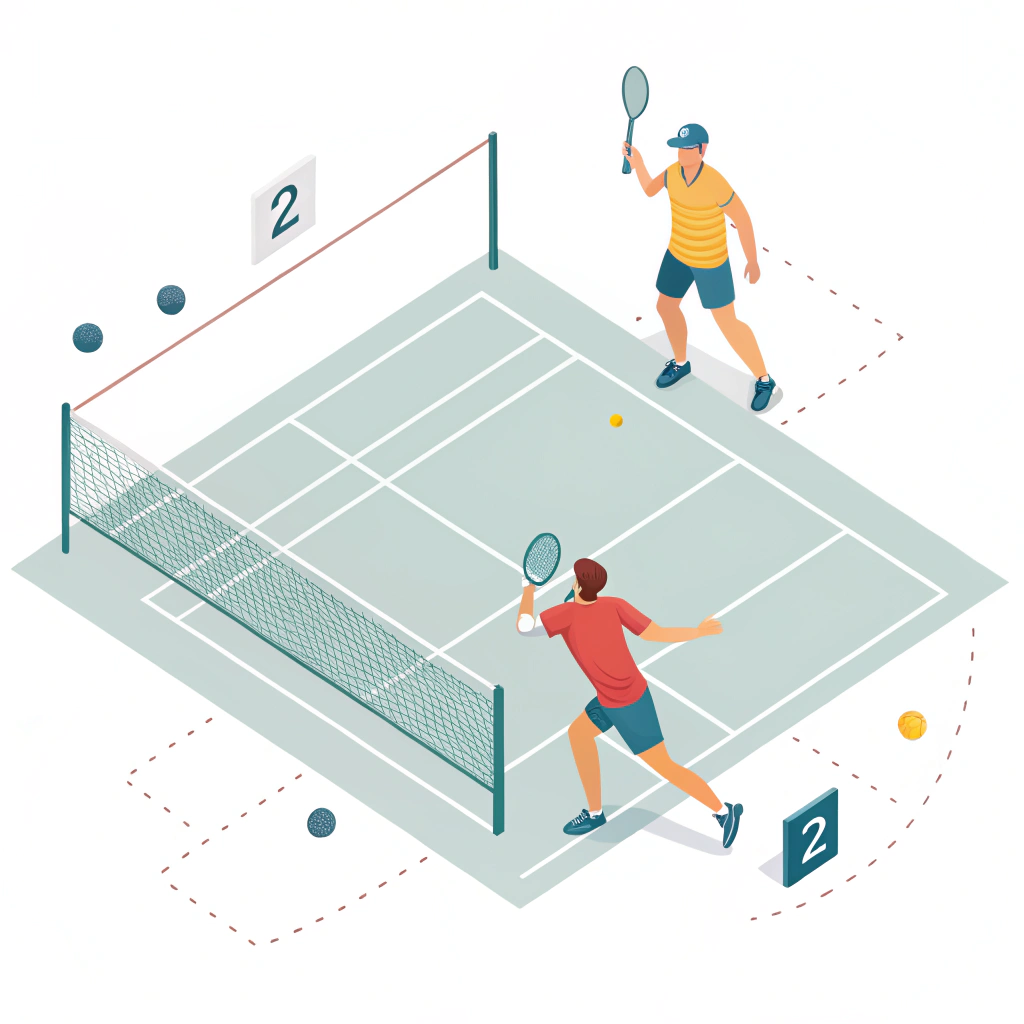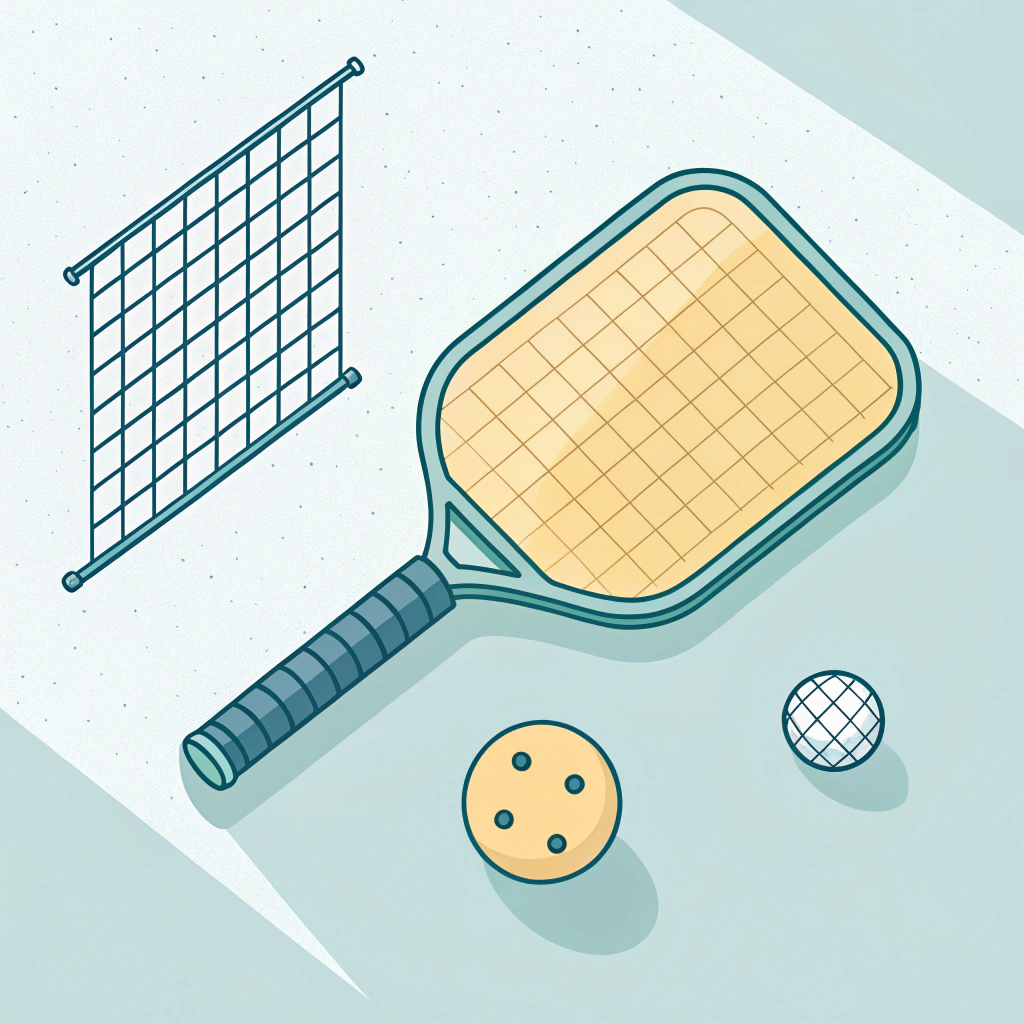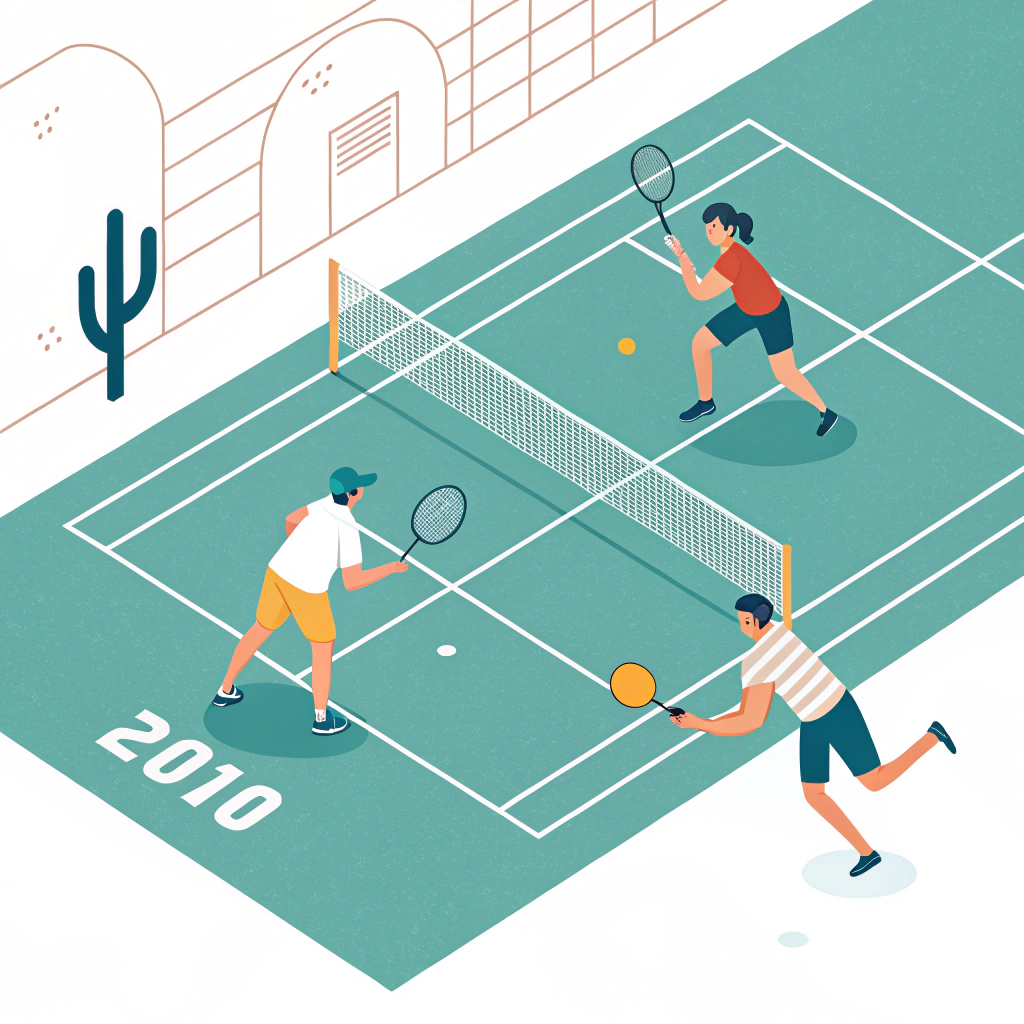Pickleball is an accessible sport combining elements of tennis, table tennis, and badminton, with simple yet structured rules that make it ideal for beginners and recreational play. In this article, we provide a comprehensive beginner’s guide covering the sport’s fundamentals, including basic rules, court dimensions, equipment, and key considerations for player safety, ensuring sports distributors and facility managers are well-equipped to understand and promote pickleball.
Pickleball is a fast-growing sport that appeals to players of all ages and skill levels. It is played on a court similar in size to a badminton court and involves a paddle, a plastic ball, and a defined playing area. The game is designed for simplicity and ease of learning, making it a great addition to recreational programs, community centers, and sports facilities. The sport’s inherent blend of strategy, agility, and fun also makes it an attractive option for competitive play.
The sport is played either as a doubles or singles match, and the rules emphasize fairness and safety. By understanding the core concepts of court layout, paddle usage, and scoring, new players and sports professionals can quickly gain the confidence necessary to introduce or participate in the game.
At its heart, pickleball revolves around a few fundamental rules that ensure a fair game for all players. The rules are designed to make the game accessible while also maintaining competitive integrity. Below is an overview of some basic guidelines:
• Serving: The server must stand behind the baseline and serve underhand. Courtside guidelines demand that the serve must land in the appropriate diagonal service court.
• One Bounce Rule: After a serve, the ball must bounce once on each side of the net before volleying is allowed. This rule helps in balancing offense and defense during play.
• Non-Volley Zone (Kitchen)1: Players are prohibited from volleying the ball while standing in this designated area near the net, ensuring player safety and preventing overly aggressive play.
• Scoring: A game typically ends at 11, 15, or 21 points, depending on the predetermined format. Players can only score points while serving.
• General Play: In addition to the rules above, players must avoid certain actions such as stepping into the non-volley zone during a volley and must respect the boundaries of the court.
A concise table summarizing the core rules is provided below for quick reference:
| Rule Aspect | Key Point |
|---|---|
| Serving | Must be underhand and from behind the baseline |
| Bounce Requirement | One bounce per side after serve before volleying allowed |
| Non-Volley Zone1 | No volleying while standing in it (the kitchen) |
| Scoring | Points can only be scored by the serving team; game ends at set points |
| Court Boundaries | Respect all lines; ball must remain in the designated playing area |
A standard pickleball court measures 20 feet by 44 feet for both singles and doubles play, making it easier to set up in various facilities. The court features several critical areas:
• Baseline and Sidelines: Define the boundaries of play.
• Non-Volley Zone (Kitchen)1: A 7-foot area on both sides of the net where volleying is prohibited.
• Service Areas: Diagonally split zones where the serve must land.
There are three major types of equipment essential for pickleball:
- Paddles: The paddle is a key tool in pickleball. High-performance paddles are manufactured using advanced techniques such as hot pressing, cold pressing, and thermoforming. Manufacturers like NEX Pickleball specialize in these processes to ensure paddles have the precise balance, durability, and ergonomic grip for optimal performance.
- Balls: Pickleballs are lightweight, made of plastic, and come in different variants for indoor and outdoor play. Their design guarantees consistent bounce and controlled flight.
- Court Accessories: Nets, boundary markers, and court resurfacing materials are crucial for maintaining a proper playing environment.
These pieces of equipment contribute to safe play and enhance the game experience. For sports equipment distributors, understanding the differences in paddle composition—such as Carbon Fiber2, Fiberglass, and composite materials—can be vital when advising clients on high-performance options.
Pickleball games are typically played using a rally-scoring system where a point is only awarded to the serving team. The score is usually announced with three numbers: the server’s score, the opponent’s score, and the server number (especially important in doubles).
• Game Point Options: Games can be set to 11, 15, or 21 points.
• Service Advantage: Winning points only occur on the serving side, emphasizing the need for strategic serving and placement.
• Changing Service: Once a point is lost, the serve transitions between players, ensuring equal opportunity for both teams.
The game begins with a serve, followed by a mandatory bounce on both sides. This rule creates a brief period where the players adjust and strategically position themselves. After the initial bounces, players have the option to volley or continue exchanging groundstrokes, provided they respect the non-volley zone rules.
The gameplay is continuous and dynamic, requiring players to maintain focus and adjust tactics based on the opponent’s moves. For beginners, mastering the serve and understanding the bounce rule are crucial in building a solid foundation in the sport.
One of the pillars of pickleball safety is the clear definition and enforcement of the non-volley zone, commonly known as the kitchen. This area extends 7 feet from the net and is designed to prevent injuries that could occur from aggressive net play and collisions.
• No Volleying in the Kitchen: Players must allow the ball to bounce in this area.
• Court Positioning: Proper footwork and positioning help avoid accidental incursions into the non-volley zone.
• Equipment Impact: Using a paddle designed for performance and safety can aid in reducing the risk of injuries.
For facility managers, it is essential to educate players on these safety rules to maintain a secure environment and encourage responsible play habits.
There are specific actions that can compromise the fairness and safety of the game. Understanding these pitfalls is key for beginners and experienced players alike. Some of the common mistakes include:
• Improper Volleying: Hitting the ball before it bounces after the serve or while standing in the non-volley zone is strictly prohibited.
• Overstepping Boundaries: Stepping into the non-volley zone during a volley disrupts the game and can lead to penalties.
• Executing Actions in the Kitchen: Attempts to perform slam shots or other aggressive hits in the non-volley zone are not allowed.
A brief checklist of prohibited actions in pickleball includes:
- Volley the ball before it bounces after the serve
- Volley while in or stepping into the non-volley zone
- Execute slam shots within the kitchen
- Serve from an improper position behind the baseline
These guidelines ensure that the game is played fairly while protecting each participant's safety and the sport's integrity.
Manufacturers like NEX Pickleball are at the forefront of producing high-performance pickleball equipment. By using advanced production processes including Hot Pressing3, Cold Pressing4, and Thermoforming5, NEX Pickleball ensures that every paddle meets the rigorous demands of both recreational and competitive play.
| Production Process | Advantages | Disadvantages |
|---|---|---|
| Hot Pressing3 | High efficiency, strong paddles, excellent impact resistance | May alter material properties; high equipment cost |
| Cold Pressing4 | Precise control, better ball feel, maintained material properties | Longer production cycle; high-quality equipment needed |
| Thermoforming5 | Intricate design, stable paddle structure, precise material distribution | Longer production time; premium pricing |
These methods ensure that the paddles not only deliver exceptional performance but also cater to the unique needs of every player, from beginners learning the basics to competitive athletes refining their game strategy.
In summary, pickleball offers a balanced mix of simplicity and competitive excitement, making it an ideal sport for community centers, schools, clubs, and sports facilities. The basic rules—such as proper serving, adherence to the one-bounce rule, and respecting the non-volley zone—are straightforward yet effective in ensuring fair play and safety.
For sports distributors and facility managers looking to capitalize on the growing popularity of pickleball, educating your clientele on these fundamentals can be a critical step in driving engagement and investment. Consider the following action steps:
- Educate your staff and customers on the rules and gameplay through workshops or demonstration events.
- Leverage high-performance equipment from trusted manufacturers like NEX Pickleball to ensure that players enjoy the best playing experience.
- Create clear, visible guidelines around court safety and equipment usage.
In doing so, you not only promote the sport but also lay the groundwork for a safe and exciting community or facility program that encourages active participation and competitive play.
What are 5 things you cannot do in pickleball?
In pickleball, you cannot volley the ball before it bounces after a serve, hit the ball while standing inside the non-volley zone (kitchen), execute aggressive slam shots within the kitchen, serve improperly from positions other than behind the baseline, or step into disallowed court areas during play.
What are the five rules in pickleball?
The core pickleball rules include: (1) no volleying in the non-volley zone, (2) ensuring one bounce per side after the serve before volleying, (3) serving from behind the baseline, (4) avoiding serves that land in the non-volley area, and (5) concluding the game when a pre-set point target (11, 15, or 21) is reached.
-
Non-Volley Zone (Kitchen): Reading this article will help you understand the strategic role of the non-volley zone in minimizing injury risks and ensuring fair play, making it essential for facility managers and safety officers. ^Return ↩ ↩2 ↩3
-
Carbon Fiber: Learn about the benefits of carbon fiber in paddle composition, including increased strength and lightweight design, which are vital for high-performance sports equipment. ^Return ↩
-
Hot Pressing: Click here to learn about this advanced manufacturing process that produces durable paddles with excellent impact resistance, important for understanding product quality. ^Return ↩ ↩2
-
Cold Pressing: Discover how cold pressing enhances paddle control and preserves material properties, providing insights into production efficiency and equipment performance. ^Return ↩ ↩2
-
Thermoforming: This link explains how thermoforming allows for intricate paddle designs and optimal material distribution, crucial for both competitive and recreational play. ^Return ↩ ↩2







